List of Governors of New Jersey
| Governor of New Jersey | |
|---|---|
.jpg) | |
| Style | The Honorable |
| Residence | Drumthwacket |
| Term length | Four years, renewable once consecutively |
| Inaugural holder | William Livingston |
| Formation | August 31, 1776 |
| Deputy | Kim Guadagno |
| Salary | $175,000 (2013)[1] |
| Website | www.state.nj.us/governor |
The Governor of New Jersey is the head of the executive branch of New Jersey's state government and the commander-in-chief of the state's military forces. The governor has a duty to enforce state laws and the power to either approve or veto bills passed by the New Jersey Legislature, to convene the legislature, and to grant pardons, except in cases of treason or impeachment.[2]
There have been 55 official governors of New Jersey, with several others acting as governor for a time.[note 1] In the official numbering, governors are counted only once each, and traditionally, only elected governors were included. However, legislation signed on January 10, 2006, allowed acting governors who had served at least 180 days to be considered full governors. The law was retroactive to January 1, 2001; it therefore changed the titles of Donald DiFrancesco and Richard Codey, affecting Jim McGreevey's numbering.[3] The current governor is Chris Christie, who took office on January 19, 2010.
Governors
- For the period before independence, see the list of colonial governors of New Jersey.
New Jersey was one of the original thirteen colonies and was admitted as a state on December 18, 1787. Prior to declaring its independence, New Jersey was a colony of the Kingdom of Great Britain.
The first New Jersey State Constitution, ratified in 1776, provided that a governor be elected annually by the state legislature, the members of which were selected by the several counties.[4] Under this constitution, the governor was president of the upper house of the legislature, then called the Legislative Council.[4] The 1844 constitution provided for a popular vote to elect the governor,[5] who no longer presided over the upper house of the legislature, now called the Senate. The 1844 constitution also lengthened the governor's term to three years, set to start on the third Tuesday in January following an election, and barred governors from succeeding themselves.[6] The 1947 constitution extended terms to four years, and limits governors from being elected to more than two consecutive terms, though they can run again after a third term has passed.[7]
The 1776 constitution provided that the vice-president of the Legislative Council would act as governor (who was president of the Council) should that office be vacant.[4] The 1844 constitution placed the president of the Senate first in the line of succession,[8] as did the subsequent 1947 constitution.[9] A constitutional amendment in 2006 created the office of lieutenant governor,[10] to be elected on the same ticket for the same term as the governor,[11] and if the office of governor is vacant, the lieutenant governor becomes governor.[12] This office was first filled in 2010.
- Parties
Federalist (4)
Democratic-Republican (3)
Democratic (27)
Whig (4)
Republican (17)
(official numbering, does not include repeat or acting governors)
| # [note 2] |
Portrait | Governor | Term start | Term end | Party | Lt. Governor [13] |
Terms [note 3] | ||
|---|---|---|---|---|---|---|---|---|---|
| 1 |  |
William Livingston | August 31, 1776 | July 25, 1790 | Federalist | None | 13 1⁄2 [note 4] | ||
| — |  |
Elisha Lawrence | July 25, 1790 | October 29, 1790 | Federalist | 1⁄2 [note 5] | |||
| 2 |  |
William Paterson | October 29, 1790 | March 30, 1793 | Federalist | 2 1⁄2 [note 6] [note 7] | |||
| — |  |
Thomas Henderson | March 30, 1793 | June 3, 1793 | Federalist | 1⁄2 [note 5] | |||
| 3 |  |
Richard Howell | June 3, 1793 | October 31, 1801 | Federalist | 8 [note 8] | |||
| 4 |  |
Joseph Bloomfield | October 31, 1801 | October 28, 1802 | Democratic- Republican |
1 | |||
| — | 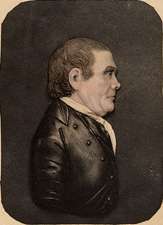 |
John Lambert | October 28, 1802 | October 29, 1803 | Democratic- Republican |
1 [note 9] | |||
| 4 |  |
Joseph Bloomfield | October 29, 1803 | October 29, 1812 | Democratic- Republican |
9 [note 10] | |||
| 5 |  |
Aaron Ogden | October 29, 1812 | October 29, 1813 | Federalist | 1 | |||
| 6 |  |
William Sanford Pennington | October 29, 1813 | June 19, 1815 | Democratic- Republican |
1 1⁄2 [note 11] | |||
| — |  |
William Kennedy | June 19, 1815 | October 26, 1815 | Democratic- Republican |
1⁄2 [note 5] [note 12] | |||
| 7 | 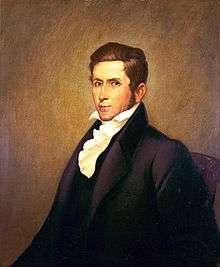 |
Mahlon Dickerson | October 26, 1815 | February 1, 1817 | Democratic- Republican |
1 1⁄2 [note 13] | |||
| 8 |  |
Isaac Halstead Williamson | February 6, 1817 | October 30, 1829 | Federalist | 12 1⁄2 [note 14] [note 15] [note 16] | |||
| — |  |
Garret D. Wall | — | — | Democratic | — [note 17] | |||
| 9 | 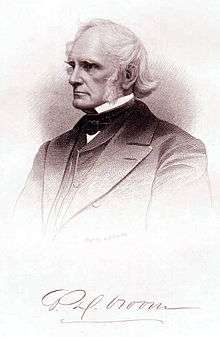 |
Peter Dumont Vroom | November 6, 1829 | October 26, 1832 | Democratic | 3 | |||
| 10 |  |
Samuel L. Southard | October 26, 1832 | February 27, 1833 | Whig | 1⁄2 [note 13] | |||
| 11 |  |
Elias P. Seeley | February 27, 1833 | October 25, 1833 | Whig | 1⁄2 [note 18] | |||
| 9 |  |
Peter Dumont Vroom | October 25, 1833 | November 3, 1836 | Democratic | 3 | |||
| 12 |  |
Philemon Dickerson | November 3, 1836 | October 27, 1837 | Democratic | 1 | |||
| 13 |  |
William Pennington | October 27, 1837 | October 27, 1843 | Whig | 6 | |||
| 14 | .jpg) |
Daniel Haines | October 27, 1843 | January 21, 1845 | Democratic | 1 [note 19] | |||
| 15 |  |
Charles C. Stratton | January 21, 1845 | January 18, 1848 | Whig | 1 [note 20] | |||
| 14 | .jpg) |
Daniel Haines | January 18, 1848 | January 21, 1851 | Democratic | 1 | |||
| 16 |  |
George Franklin Fort | January 21, 1851 | January 17, 1854 | Democratic | 1 | |||
| 17 |  |
Rodman M. Price | January 17, 1854 | January 20, 1857 | Democratic | 1 | |||
| 18 |  |
William A. Newell | January 20, 1857 | January 17, 1860 | Republican | 1 | |||
| 19 |  |
Charles Smith Olden | January 17, 1860 | January 20, 1863 | Republican | 1 | |||
| 20 | 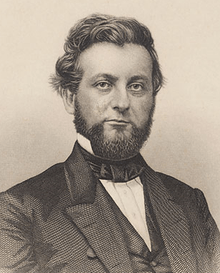 |
Joel Parker | January 20, 1863 | January 16, 1866 | Democratic | 1 | |||
| 21 |  |
Marcus Lawrence Ward | January 16, 1866 | January 19, 1869 | Republican | 1 | |||
| 22 | 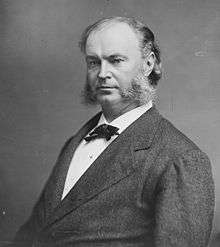 |
Theodore Fitz Randolph | January 19, 1869 | January 16, 1872 | Democratic | 1 | |||
| 20 |  |
Joel Parker | January 16, 1872 | January 19, 1875 | Democratic | 1 | |||
| 23 |  |
Joseph D. Bedle | January 19, 1875 | January 15, 1878 | Democratic | 1 | |||
| 24 |  |
George B. McClellan | January 15, 1878 | January 18, 1881 | Democratic | 1 | |||
| 25 |  |
George C. Ludlow | January 18, 1881 | January 15, 1884 | Democratic | 1 | |||
| 26 |  |
Leon Abbett | January 15, 1884 | January 18, 1887 | Democratic | 1 | |||
| 27 | 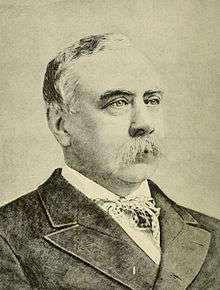 |
Robert Stockton Green | January 18, 1887 | January 21, 1890 | Democratic | 1 | |||
| 26 |  |
Leon Abbett | January 21, 1890 | January 17, 1893 | Democratic | 1 | |||
| 28 |  |
George Theodore Werts | January 17, 1893 | January 21, 1896 | Democratic | 1 | |||
| 29 |  |
John W. Griggs | January 21, 1896 | January 31, 1898 | Republican | 1⁄3 [note 21] | |||
| — |  |
Foster McGowan Voorhees | January 31, 1898 | October 18, 1898 | Republican | 1⁄3 [note 22] | |||
| — |  |
David Ogden Watkins | October 18, 1898 | January 17, 1899 | Republican | 1⁄3 [note 23] | |||
| 30 |  |
Foster McGowan Voorhees | January 17, 1899 | January 21, 1902 | Republican | 1 [note 24] | |||
| 31 | .jpg) |
Franklin Murphy | January 21, 1902 | January 17, 1905 | Republican | 1 [note 25] | |||
| 32 |  |
Edward C. Stokes | January 17, 1905 | January 21, 1908 | Republican | 1 | |||
| 33 |  |
John Franklin Fort | January 21, 1908 | January 17, 1911 | Republican | 1 [note 26] | |||
| 34 |  |
Woodrow Wilson | January 17, 1911 | March 1, 1913 | Democratic | 1⁄3 [note 27] [note 28] | |||
| — |  |
James Fairman Fielder | March 1, 1913 | October 28, 1913 | Democratic | 1⁄3 [note 29] | |||
| — | 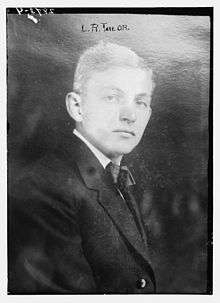 |
Leon R. Taylor | October 28, 1913 | January 20, 1914 | Democratic | 1⁄3 [note 23] | |||
| 35 |  |
James Fairman Fielder | January 20, 1914 | January 16, 1917 | Democratic | 1 [note 30] [note 31] | |||
| 36 |  |
Walter Evans Edge | January 16, 1917 | May 16, 1919 | Republican | 1⁄3 [note 13] [note 31] [note 32] | |||
| — |  |
William Nelson Runyon | May 16, 1919 | January 13, 1920 | Republican | 1⁄3 [note 33] | |||
| — | 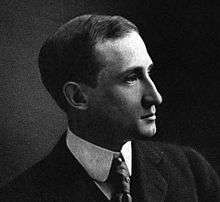 |
Clarence E. Case | January 13, 1920 | January 20, 1920 | Republican | 1⁄3 [note 34] | |||
| 37 | 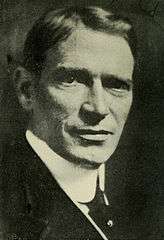 |
Edward I. Edwards | January 20, 1920 | January 15, 1923 | Democratic | 1 | |||
| 38 |  |
George Sebastian Silzer | January 15, 1923 | January 19, 1926 | Democratic | 1 | |||
| 39 | 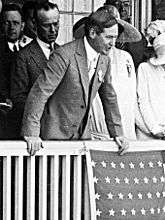 |
A. Harry Moore | January 19, 1926 | January 15, 1929 | Democratic | 1 | |||
| 40 |  |
Morgan Foster Larson | January 15, 1929 | January 19, 1932 | Republican | 1 | |||
| 39 |  |
A. Harry Moore | January 19, 1932 | January 3, 1935 | Democratic | 1⁄3 [note 13] | |||
| — |  |
Clifford Ross Powell | January 3, 1935 | January 8, 1935 | Republican | 1⁄3 [note 33] | |||
| — |  |
Horace Griggs Prall | January 8, 1935 | January 15, 1935 | Republican | 1⁄3 [note 34] | |||
| 41 | Harold G. Hoffman | January 15, 1935 | January 18, 1938 | Republican | 1 | ||||
| 39 |  |
A. Harry Moore | January 18, 1938 | January 21, 1941 | Democratic | 1 | |||
| 42 |  |
Charles Edison | January 21, 1941 | January 18, 1944 | Democratic | 1 | |||
| 36 |  |
Walter Evans Edge | January 18, 1944 | January 21, 1947 | Republican | 1 | |||
| 43 | Alfred E. Driscoll | January 21, 1947 | January 19, 1954 | Republican | 2 [note 35] | ||||
| 44 |  |
Robert B. Meyner | January 19, 1954 | January 16, 1962 | Democratic | 2 | |||
| 45 |  |
Richard J. Hughes | January 16, 1962 | January 20, 1970 | Democratic | 2 | |||
| 46 |  |
William T. Cahill | January 20, 1970 | January 15, 1974 | Republican | 1 | |||
| 47 |  |
Brendan Byrne | January 15, 1974 | January 19, 1982 | Democratic | 2 | |||
| 48 |  |
Thomas Kean | January 19, 1982 | January 16, 1990 | Republican | 2 | |||
| 49 |  |
James Florio | January 16, 1990 | January 18, 1994 | Democratic | 1 | |||
| 50 |  |
Christine Todd Whitman | January 18, 1994 | January 31, 2001 | Republican | 1 1⁄5 [note 36] | |||
| 51 |  |
Donald DiFrancesco | January 31, 2001 | January 8, 2002 | Republican | 1⁄5 [note 33] [note 37] | |||
| — |  |
John Farmer Jr. | January 8, 2002 | January 8, 2002 | Republican | 1⁄5 [note 38] | |||
| — |  |
John O. Bennett | January 8, 2002 | January 12, 2002 | Republican | 1⁄5 [note 39] | |||
| — | .jpg) |
Richard Codey | January 12, 2002 | January 15, 2002 | Democratic | 1⁄5 [note 39] | |||
| 52 |  |
Jim McGreevey | January 15, 2002 | November 15, 2004 | Democratic | 1⁄2 [note 40] | |||
| 53 | .jpg) |
Richard Codey | November 15, 2004 | January 17, 2006 | Democratic | 1⁄2 [note 34] [note 37] | |||
| 54 | .jpg) |
Jon Corzine | January 17, 2006 | January 19, 2010 | Democratic | 1 [note 41] | |||
| 55 | .jpg) |
Chris Christie | January 19, 2010 | Incumbent | Republican | Kim Guadagno | 2 [46] [note 42] | ||
Acting governor
Prior to 2010, unlike most other states, New Jersey did not have the office of lieutenant governor. Until 2010, when the office of governor was vacant or the governor was unable to fulfill his/her duties through injury, the President of the State Senate served as the acting governor. The Senate President continued in the legislative role during his/her tenure as the state's acting chief executive, thus giving the person control over executive and legislative authority. The acting governor served either until the next general election, until the governor recovered from his/her injuries, or, if the governor died or resigned less than 16 months before end of the term, until the end of the term. Richard Codey served as acting governor of New Jersey until January 2006, following the resignation of Jim McGreevey in late 2004. Following the resignation of Christine Todd Whitman in 2001 to become EPA Administrator, Donald DiFrancesco assumed the acting governor's post. The position of lieutenant governor was created in the 2005 state election effective with the 2009 election.
Following Whitman's resignation and DiFrancesco's departure, John O. Bennett served as acting governor for three and a half days. During that time, he signed a few bills into law, gave a State of the State Address, and held parties at Drumthwacket, the New Jersey governor's mansion. Similarly, Richard J. Codey served as acting governor as well. Because control of the New Jersey State Senate was split, resulting in two Senate co-presidents, Codey and Bennett, each held the office of acting governor for three days. Perhaps this spectacle as much as any other factor led to the voters' decision to amend the state constitution to create the office of Lieutenant Governor of New Jersey.
Other high offices held
This is a table of congressional seats, other federal offices, and other governorships held by governors. All representatives and senators mentioned represented New Jersey. Acting governors are included only when they filled a vacancy in the office of governor, not when they acted for a time when the governor was out of state or unable to serve.
- * Denotes an office for which the governor resigned the governorship, in order to assume the noted office.
- † Denotes an office that the person resigned, to become governor.
| Governor | Gubernatorial term | U.S. Congress | Other offices held | Source | |
|---|---|---|---|---|---|
| U.S. House | U.S. Senate | ||||
| Livingston, WilliamWilliam Livingston | 1776–1790 | — | — | Continental Delegate (1774–1776) | [47] |
| Paterson, WilliamWilliam Paterson | 1790–1793 | — | S† | Continental Delegate, Associate Justice of the U.S. Supreme Court* | [48] |
| Henderson, ThomasThomas Henderson | 1793 | H | — | Elected as a Continental Delegate but declined | [49] |
| Bloomfield, JosephJoseph Bloomfield | 1801–1802 1803–1812 |
H | — | [50] | |
| Lambert, JohnJohn Lambert | 1802–1803 | — | S | [51] | |
| Ogden, AaronAaron Ogden | 1812–1813 | — | S | [52] | |
| Dickerson, MahlonMahlon Dickerson | 1815–1817 | — | S* | U.S. Secretary of the Navy (1834–1838) | [53][54] |
| Vroom, Peter DumontPeter Dumont Vroom | 1829–1832 1833–1836 |
H | — | Minister to Prussia | [55] |
| Southard, Samuel L.Samuel L. Southard | 1832–1833 | — | S* | President pro tempore of the U.S. Senate, U.S. Secretary of the Navy | [56] |
| Dickerson, PhilemonPhilemon Dickerson | 1836–1837 | H† | — | [57] | |
| Pennington, WilliamWilliam Pennington | 1837–1843 | H | — | Speaker of the U.S. House of Representatives (Feb. 1, 1860 – Mar. 3, 1861) | [58] |
| Stratton, Charles C.Charles C. Stratton | 1845–1848 | H | — | [59] | |
| Price, Rodman M.Rodman M. Price | 1854–1857 | H | — | [60] | |
| Newell, William A.William A. Newell | 1857–1860 | H | — | Governor of the Territory of Washington (1880–1884) | [61] |
| Ward, Marcus LawrenceMarcus Lawrence Ward | 1866–1869 | H | — | [62] | |
| Randolph, Theodore FitzTheodore Fitz Randolph | 1869–1872 | — | S | [63] | |
| Green, Robert StocktonRobert Stockton Green | 1887–1890 | H† | — | [64] | |
| Griggs, John W.John W. Griggs | 1896–1898 | — | — | U.S. Attorney General* | [65] |
| Wilson, WoodrowWoodrow Wilson | 1911–1913 | — | — | President of the United States* | [66] |
| Edge, Walter EvansWalter Evans Edge | 1917–1919 1944–1947 |
— | S* | Ambassador to France (1929–1933) | [67] |
| Edwards, Edward I.Edward I. Edwards | 1920–1923 | — | S | [68] | |
| Moore, A. HarryA. Harry Moore | 1926–1929 1932–1935 1938–1941 |
— | S†* | [69][70] | |
| Hoffman, Harold G.Harold G. Hoffman | 1935–1938 | H | — | [71] | |
| Edison, CharlesCharles Edison | 1941–1944 | — | — | U.S. Secretary of the Navy | [72] |
| Cahill, William T.William T. Cahill | 1970–1973 | H† | — | [73] | |
| Florio, JamesJames Florio | 1990–1994 | H† | — | [74] | |
| Whitman, Christine ToddChristine Todd Whitman | 1994–2001 | — | — | Administrator of the Environmental Protection Agency* | [75] |
| Corzine, JonJon Corzine | 2006–2010 | — | S† | [76] | |
- Note: Garret D. Wall, who was elected to be governor in 1829 but declined, served as a U.S. Senator (1835–1841).[77]
- Note: Gov. William Pennington (1837–1843) was appointed Governor of the Territory of Minnesota by President Millard Fillmore (1850–1853), but declined.
Living former U.S. governors of New Jersey
As of January 2017, there are eight former U.S. governors of New Jersey and two former acting U.S. governors of New Jersey who are currently living at this time, the oldest U.S. governor of New Jersey being Brendan Byrne (served 1974–1982, born 1924). The most recent U.S. governor of New Jersey to die and the most recently serving U.S. governor of New Jersey to have died was William T. Cahill (served 1970–1974, born 1912), on July 1, 1996.
| Governor | Gubernatorial term | Date of birth (and age) |
|---|---|---|
| Brendan Byrne | 1974–1982 | April 1, 1924 |
| Thomas Kean | 1982–1990 | April 21, 1935 |
| James Florio | 1990–1994 | August 29, 1937 |
| Christine Todd Whitman | 1994–2001 | September 26, 1946 |
| Donald DiFrancesco | 2001–2002 | November 20, 1944 |
| John Farmer, Jr. | 2002 (acting) | June 24, 1957 |
| John O. Bennett | 2002 (acting) | August 6, 1948 |
| Richard Codey | 2002 (acting) 2004–2006 |
November 27, 1946 |
| Jim McGreevey | 2002–2004 | August 6, 1957 |
| Jon Corzine | 2006–2010 | January 1, 1947 |
Notes
- ↑ Only acting governors who filled a vacant office are included in the list. People who acted as governor for a period when the governor was out of state or unable to serve for a period are noted with their governor. It is possible other people acted as governor for short periods but were not recorded.
- ↑ Repeat governors are officially numbered only once; subsequent terms are marked with their original number italicized.
- ↑ The fractional terms of some governors are not to be understood absolutely literally; rather, they are meant to show how many times a governor was elected, and to show single terms during which multiple governors served, due to resignations, deaths and the like.
- ↑ Died in office
- 1 2 3 As vice-president of the Legislative Council, acted as governor for unexpired term
- ↑ Resigned to be an Associate Justice of the Supreme Court of the United States
- ↑ The National Governors Association states Paterson took office on October 30; however, older books specify that he took office on October 29.[14]
- ↑ Howell was in Pennsylvania in command of the New Jersey militia during the Whiskey Rebellion; during his absence, Thomas Henderson, as vice-president of the Legislative Council, acted as governor from September 20 to December 25, 1794.[15]
- ↑ The 1802 election was deadlocked, with the legislature unable to pick a candidate, giving up on November 25, 1802. Lambert, as vice-president of the Legislative Council, acted as governor until the next election.[16]
- ↑ Bloomfield was in New York in command of Military District 3 during the War of 1812; during his absence, Charles Clark, as vice-president of the Legislative Council, acted as governor from June 1 to October 29, 1812, when Bloomfield's term ended.[17]
- ↑ Resigned to be a federal judge in the District of New Jersey.[18]
- ↑ All official listings omit Kennedy, who acted as governor for four months.[19]
- 1 2 3 4 Resigned to take an elected seat in the U.S. Senate.
- ↑ Elected by the legislature to be governor upon Mahlon Dickerson's resignation.[20] Between Dickerson's resignation and Williamson's election, it is unknown who was acting governor.
- ↑ No source mentions anyone acting as governor between Dickerson's resignation and Williamson's election; the vice-president of the Legislative Council at the time was Jesse Upson, so he likely acted as governor.[21]
- ↑ Williamson was known to be a Federalist; though the Federalist Party ceased existing around 1820, no sources say Williamson changed his party affiliation, perhaps choosing to remain loyal to the Federalist ideals.[22] One source describes him as an "ex-Federalist" before he was even elected.[23] A contemporary source says he remained in office until the "Jackson party" controlled the legislature; as this is a reference to the Democratic-Republican Party, it can be assumed Williamson did not switch to that party.[24]
- ↑ Wall was elected on October 30, 1829; however, he declined the post, effective November 6, 1829.[25]
- ↑ Seeley was vice-president of the Legislative Council at the time of Southard's resignation; however, Seeley was elected governor rather than simply acting in the post for the rest of Southard's term.[26]
- ↑ The 1844 constitution took effect during Haines' first term, setting the end of his term at the third Tuesday in January.[6]
- ↑ First governor elected under the terms of the 1844 constitution, which increased term lengths from one to three years, and which also made him the first popularly elected governor.[6]
- ↑ Resigned to be U.S. Attorney General.
- ↑ As president of the Senate, acted as governor until his own resignation. Voorhees was nominated for governor for the 1898 election, but the constitution prohibited governors from succeeding themselves. To get around this, he resigned his Senate seat (and thus ceased being acting governor), so that he could run for governor, winning the race.[27]
- 1 2 As speaker of the house of representatives, acted as governor for unexpired term.
- ↑ Voorhees was out of the country in Europe for several weeks in 1900; William M. Johnson, as president of the Senate, formally acted as governor from May 21 to June 19.[28][29][30]
- ↑ Murphy was out of the state twice in 1904; Edmund W. Wakelee, as president of the Senate, formally acted as governor twice, and according to page 284 the 1905 Manual of the Legislature, served from April 25 to June 5, when Murphy was in Europe, and from June 14 to June 27, when Murphy was visiting Chicago and St. Louis.[31] However, page 16 of the same book states that he served from April 25 to June 5, and June 15 to June 27.[28] He actually took the oaths of office on April 26 and June 14.[30]
- ↑ Fort was out of the state for some time in 1909; Joseph Sherman Frelinghuysen, Sr., as president of the Senate, acted as governor for an unknown period.[32]
- ↑ Resigned to be President of the United States.
- ↑ Wilson was out of the state for multiple periods during his administration.[29] Documented episodes include from May 3 to June 3, 1911, during which time Ernest R. Ackerman, as president of the Senate, acted as governor,[33][34] though another source states he took the oath on May 4.[35] Ackerman also acted as governor from October 25, 1911, for about a week, and again for about a week in mid-November, 1911.[36] John Dyneley Prince became president of the Senate in 1912, and is known to have acted as governor on at least 11 different occasions.[36]
- ↑ As president of the Senate, acted as governor until his own resignation. As with Voorhees, he had been nominated for governor for the 1913 election, but under the constitution could not succeed himself, so he resigned from the Senate to run, winning the election.[37]
- ↑ Fielder was out of the state for a time in June 1914; John W. Slocum, as president of the Senate, acted as governor for an unknown period.[38] Walter Evans Edge later became president of the Senate, and acted as governor for five weeks in 1915.[39] Later again, George W. F. Gaunt became president of the Senate and acted as governor, though only two days are specifically known: September 19, 1916 and October 9, 1916.[40]
- 1 2 One source states that George W. F. Gaunt, as president of the Senate, acted as governor in 1917, but it is unknown if he was acting in place of James Fairman Fielder or Walter Evans Edge.[29]
- ↑ Edge was out of the state for a time in 1918; Thomas F. McCran, as president of the Senate, is known to have acted as governor, but for an unknown period.[29]
- 1 2 3 As president of the Senate, acted as governor until his Senate term ended.
- 1 2 3 As president of the Senate, acted as governor for unexpired term.
- ↑ Driscoll's second term was the first elected under the terms of the 1947 constitution, which increased term lengths to four years.[7]
- ↑ Resigned to be Administrator of the Environmental Protection Agency.
- 1 2 Acted as governor for longer than 180 days after January 1, 2001, so is considered a full governor pursuant to a 2006 law[3]
- ↑ As attorney general, acted as governor for 90 minutes between Senate sessions[41]
- 1 2 In early 2002, the state Senate was evenly split between Republicans and Democrats.[42] The compromise to pick a senate president – and therefore, an acting governor – was to have John Bennett, a Republican, act as governor from 1:30 p.m. January 8 to 12:01 a.m. January 12, and Democrat Richard Codey would then act from 12:01 a.m. January 12 to noon on January 15, at which point the elected governor Jim McGreevey took office.[43]
- ↑ Resigned due to a sex scandal involving an aide.
- ↑ Corzine was severely injured in a car accident on April 12, 2007; Richard Codey, as president of the Senate, acted as governor until May 7, 2007.[44] Corzine also left the country in 2010 for a vacation to Switzerland; Stephen M. Sweeney, as president of the Senate, acted as governor from January 14 to around January 17.[45]
- ↑ Governor Christie's second term expires January 16, 2018; he is term limited.
References
- General
- Biographies of New Jersey Governors, New Jersey State Library
- "Governors of New Jersey". National Governors Association. Archived from the original on February 10, 2007. Retrieved January 12, 2010.
- Lundy, F.L.; et al. (1905). Manual of the Legislature of New Jersey, One Hundred and Twenty-Ninth Session. Trenton, New Jersey: J. L. Murphy Publishing Company. Retrieved January 19, 2010.
- Lundy, F.L.; et al. (1921). Manual of the Legislature of New Jersey, One Hundred and Forty-Fifth Session. Trenton, New Jersey: State Gazette Publishing Company. Retrieved January 19, 2010.
- Lee, Francis Bazley (1902). New Jersey as a Colony and a State. New York City: The Publishing Society of New Jersey. ISBN 1-146-76658-0. Retrieved January 14, 2010.
- Kerney, James (1926). The Political Education of Woodrow Wilson. Retrieved January 19, 2010.
- Report of the Adjutant-General of the State of New Jersey for the year ending October 31st, 1906. Somerville, New Jersey: The Union-Gazette Printing House. 1907. pp. 122–131. Retrieved January 14, 2010.
- Constitutions
- "Constitution of the State of New Jersey, as amended". New Jersey Legislature. 1947. Archived from the original on June 30, 2009. Retrieved January 13, 2010.
- "Constitution of the State of New Jersey". New Jersey Department of State. 1947. Retrieved January 14, 2010.
- "Constitution of the State of New Jersey". New Jersey Department of State. 1844. Retrieved January 13, 2010.
- "Constitution of the State of New Jersey". New Jersey Department of State. 1776. Retrieved January 13, 2010.
- Specific
- ↑ "Christie is 4th-highest paid governor, survey says". Star-Ledger. June 25, 2013. Retrieved September 16, 2013.
- ↑ NJ Constitution article V
- 1 2 New Jersey Legislature. P.L.2005, c. 282.: Provides title of person who serves as Acting Governor for continuous period of at least 180 days will be "Governor of the State of New Jersey" for official and historical purposes. Approved January 9, 2006, retroactive to January 1, 2001. Accessed January 6, 2008.
- 1 2 3 1776 Constitution article 7
- ↑ 1844 Constitution article V, § 2
- 1 2 3 1844 Constitution article V, § 3
- 1 2 NJ Constitution article V, § 1, cl. 5
- ↑ 1844 Constitution article V , § 12
- ↑ NJ Constitution article V, § 1, cl. 6, original
- ↑ NJ Constitution article XI, § 7
- ↑ NJ Constitution article V, § 1, cl. 4
- ↑ NJ Constitution article V, § 1, cl. 6, as amended
- ↑ The office of lieutenant governor was created in 2006 and was first filled in 2010.
- ↑ Report p. 122
- ↑ Report p. 123
- ↑ Lee pp. 155–156
- ↑ Report p. 124
- ↑ "Pennington, William Sanford". Federal Judicial Center. Archived from the original on May 14, 2009. Retrieved January 14, 2010.
- ↑ Report pp. 125–126
- ↑ Lee pp. 160–161
- ↑ Lundy et al. (1921) p. 127
- ↑ Whitehead, John (1897). The Civil and Judicial History of New Jersey, Volume I. The Boston History Company. p. 361. Retrieved January 15, 2010.
- ↑ Birkner, Michael (1984). Samuel L. Southard: Jeffersonian Whig. p. 39. ISBN 978-0-8386-3160-7. Retrieved January 15, 2010.
- ↑ Elmer, Lucius Quintus Cincinnatus (1872). Collections of the New Jersey Historical Society, Volume VII. p. 175. Retrieved January 15, 2010.
- ↑ Lee pp. 377–378
- ↑ "Elias Pettit Seeley" (PDF). New Jersey State Library. Retrieved January 14, 2010.
- ↑ "Foster McGowan Voorhees" (PDF). New Jersey State Library. Retrieved January 14, 2010.
- 1 2 Lundy et al. (1905) p. 16
- 1 2 3 4 Lundy et al. (1921) p. 22
- 1 2 "Governor's Oaths". New Jersey Department of State. Retrieved January 19, 2010.
- ↑ Lundy et al. (1905) p. 284
- ↑ Lundy et al. (1921) p. 252
- ↑ Documents of the One Hundred and Thirty-Sixth Legislature of the State of New Jersey and the Sixty-Eighth Under the New Constitution. I. Trenton, New Jersey: State Gazette Publishing Company. 1912. p. 475. Retrieved January 19, 2010.
- ↑ Lundy et al. (1921) p. 262
- ↑ Kerney p. 140
- 1 2 Kerney p. 141
- ↑ "James Fairman Fielder" (PDF). New Jersey State Library. Retrieved January 14, 2010.
- ↑ Lundy et al. (1921) p. 361
- ↑ Congress, United States (1920). Official Congressional Directory, 2nd Edition, February 1920. p. 64. Retrieved January 19, 2010.
- ↑ Jersey, New (1916). Acts of the Legislature of the State of New Jersey. pp. 1009–1010. Retrieved January 19, 2010.
- ↑ David Kocieniewski (January 8, 2002). "Newark Stadium Bill Dies in Final Session". The New York Times. Retrieved January 14, 2010.
During the 90 minutes between Mr. DiFrancesco's departure and Mr. Bennett's swearing in, Attorney General John J. Farmer Jr. will formally hold the title of acting governor.
- ↑ David Kocieniewski (January 12, 2002). "The Hours of Power of an Acting Governor: Deconstructing Bennett's 3-Day Legacy". The New York Times. Retrieved January 22, 2010.
- ↑ "New Jersey Governor John O. Bennett". National Governors Association. Archived from the original on September 27, 2007. Retrieved January 22, 2010.
- ↑ David W. Chen (May 6, 2007). "Corzine to Resume Duties as Governor on Monday". The New York Times. Retrieved January 15, 2010.
- ↑ "New Jersey's New Senate President Fills in for Corzine". WNYC. January 15, 2010. Retrieved January 21, 2010.
- ↑ http://www.nj.com/politics/index.ssf/2014/01/chris_christie_officially_begins_second_term_with_passionate_speech_that_dodges_scandals.html#incart_river_default
- ↑ "Livingston, William". Biographical Directory of the United States Congress. Retrieved January 13, 2010.
- ↑ "Paterson, William". Biographical Directory of the United States Congress. Retrieved January 13, 2010.
- ↑ "Henderson, Thomas". Biographical Directory of the United States Congress. Retrieved January 15, 2010.
- ↑ "Bloomfield, Joseph". Biographical Directory of the United States Congress. Retrieved January 13, 2010.
- ↑ "Lambert, John". Biographical Directory of the United States Congress. Retrieved January 13, 2010.
- ↑ "Ogden, Aaron". Biographical Directory of the United States Congress. Retrieved January 13, 2010.
- ↑ "Dickerson, Mahlon". Biographical Directory of the United States Congress. Retrieved January 13, 2010.
- ↑ "New Jersey Governor Mahlon Dickerson". National Governors Association. Archived from the original on September 30, 2007. Retrieved January 15, 2010.
- ↑ "Vroom, Peter Dumont". Biographical Directory of the United States Congress. Retrieved January 13, 2010.
- ↑ "Southard, Samuel Lewis". Biographical Directory of the United States Congress. Retrieved January 13, 2010.
- ↑ "Dickerson, Philemon". Biographical Directory of the United States Congress. Retrieved January 13, 2010.
- ↑ "Pennington, William". Biographical Directory of the United States Congress. Retrieved January 13, 2010.
- ↑ "Stratton, Charles Creighton". Biographical Directory of the United States Congress. Retrieved January 13, 2010.
- ↑ "Price, Rodman McCamley". Biographical Directory of the United States Congress. Retrieved January 13, 2010.
- ↑ "Newell, William Augustus". Biographical Directory of the United States Congress. Retrieved January 13, 2010.
- ↑ "Ward, Marcus Lawrence". Biographical Directory of the United States Congress. Retrieved January 13, 2010.
- ↑ "Randolph, Theodore Fitz". Biographical Directory of the United States Congress. Retrieved January 13, 2010.
- ↑ "Green, Robert Stockton". Biographical Directory of the United States Congress. Retrieved January 13, 2010.
- ↑ "New Jersey Governor John William Griggs". National Governors Association. Archived from the original on September 30, 2007. Retrieved January 13, 2010.
- ↑ "New Jersey Governor Thomas Woodrow Wilson". National Governors Association. Archived from the original on September 30, 2007. Retrieved January 13, 2010.
- ↑ "Edge, Walter Evans". Biographical Directory of the United States Congress. Retrieved January 13, 2010.
- ↑ "Edwards, Edward Irving". Biographical Directory of the United States Congress. Retrieved January 13, 2010.
- ↑ "Moore, Arthur Harry". Biographical Directory of the United States Congress. Retrieved January 13, 2010.
- ↑ "New Jersey Governor Arthur Harry Moore". National Governors Association. Archived from the original on October 19, 2009. Retrieved January 15, 2010.
- ↑ "Hoffman, Harold Giles". Biographical Directory of the United States Congress. Retrieved January 13, 2010.
- ↑ "New Jersey Governor Charles Ediston". National Governors Association. Archived from the original on September 30, 2007. Retrieved January 13, 2010.
- ↑ "Cahill, William Thomas". Biographical Directory of the United States Congress. Retrieved January 13, 2010.
- ↑ "Florio, James Joseph". Biographical Directory of the United States Congress. Retrieved January 13, 2010.
- ↑ "New Jersey Governor Christine Todd Whitman". National Governors Association. Archived from the original on September 27, 2007. Retrieved January 13, 2010.
- ↑ "Corzine, Jon Stevens". Biographical Directory of the United States Congress. Retrieved January 13, 2010.
- ↑ "Wall, Garret Dorset". Biographical Directory of the United States Congress. Retrieved January 15, 2010.
External links
| Wikimedia Commons has media related to Governors of New Jersey. |
